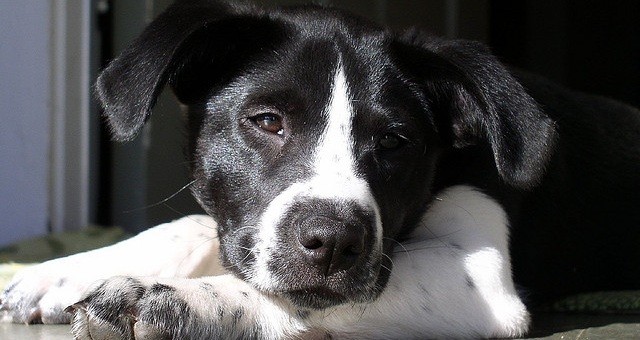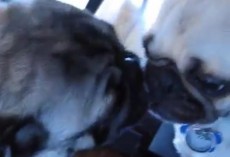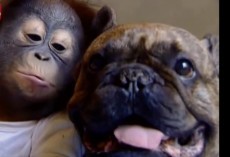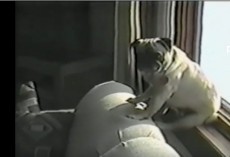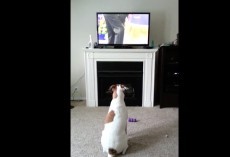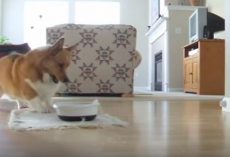Check out all of the myths below. Do you feed your doggy leftovers? A few people food is okay every once in a while (like chicken and other healthy stuff), but constantly feeding your pup leftovers can cause him to become overweight and lethargic. Refrigerate or throw away fatty leftovers — don't give them to Fido!
In addition to the myths listed below, there are always more myths to debunk. PetsAdvisor has more myths that you may be believing about Fido. Learn the truth about more myths and keep your pooch happy, healthy, and safe.
Myth #1: Only male dogs hump other dogs.
My last two female dogs can easily prove this one wrong. They both took a ride on each other, people and objects. They were both female and were spayed as soon as they were old enough.
Myth #2: Indoor dogs don’t need heartworm prevention.
Tell that to the mosquito that just flew inside your house and eyed your dog like a buffet station. Mosquitoes spread heartworms, and they can land on your pet indoors or outdoors.
Myth #3: Giving your dog leftovers will reduce waste.
While your trash can or bin won’t fill as quickly, you could be feeding your dog harmful bones, high-fat content foods and even ingredients that are toxic to your dog.
Myth #4: Dogs eat grass only if they are sick.
Ancestors such as wolves ate an entire animal — stomach contents included. Small prey animals usually fed off of grasses and berries, and that’s most likely where the taste for grass originated. Eating too much grass (or too often) may incur a trip to the vet’s office.
Myth #5: A dog will be fine in the car as long as you crack the windows.
Never, ever do this, even if you think you are only running out for a minute. Even in cool temperatures the heat inside a vehicle can rise quickly, and this is even more dangerous in warmer temperatures.
Myth #6: A dog’s mouth is cleaner than a human’s mouth.
Did you not see your dog lick his butt or eat the neighbor’s dog’s poop? While it’s true most of the germs in a dog’s mouth are dog-specific and harmless, that does not include where your dog’s mouth might have been.
Dogs that do not get their teeth brushed can also have tarter buildup and excess bacteria. Another possibility is worms. Humans can get worms from dogs without noticing it until symptoms appear.
Myth #7: Dogs are colorblind.
The canine retina indicates that dogs can see some colors, primarily blues, yellows, greens and shades of gray.
Myth #8: Calculate a dog’s age by multiplying human years times seven.
Recent research and media have reported this method as outdated. By the time your dog is one year old she’s already a teenager, and extra years get added as the dog gets older.
Myth #9: A wagging tail is a sign of a happy dog.
This is not always true. Tail wagging can also be a sign of fear, anxiety or impending aggression.
Myth #10: Female dogs need to have one litter of puppies before they can be spayed.
This myth is one of the worst — and one that keeps overpopulation a constant problem. Dogs do not have to produce a litter before they can be altered.
Myth #11: Breeds on the banned list are always aggressive and will attack anyone given the chance.
Myths like these only add fuel to the fire that is breed-specific legislation (BSL). Any dog can be aggressive without proper (or with improper) socialization and training.
Myth #12: All large dogs are dangerous.
This one is just plain nuts.
Myth #13: Dogs get all the exercise they need in the backyard.
Dogs go outside to do their business and maybe investigate around, but they are natural pack animals and want to be by your side. Regular exercise helps promote stable weight and increases health benefits.
Myth #14: You can’t teach an old dog new tricks.
This has to be the oldest myth about older dogs, and it’s still not true. Many older dogs may suffer limited hearing or vision that prevents them from learning or following commands easily, but age is not a determining factor for tricks or training.
Myth #15: A dry or warm nose is a sign your dog is sick.
Dog noses are not always cool and wet, and occasional dryness is perfectly normal.

